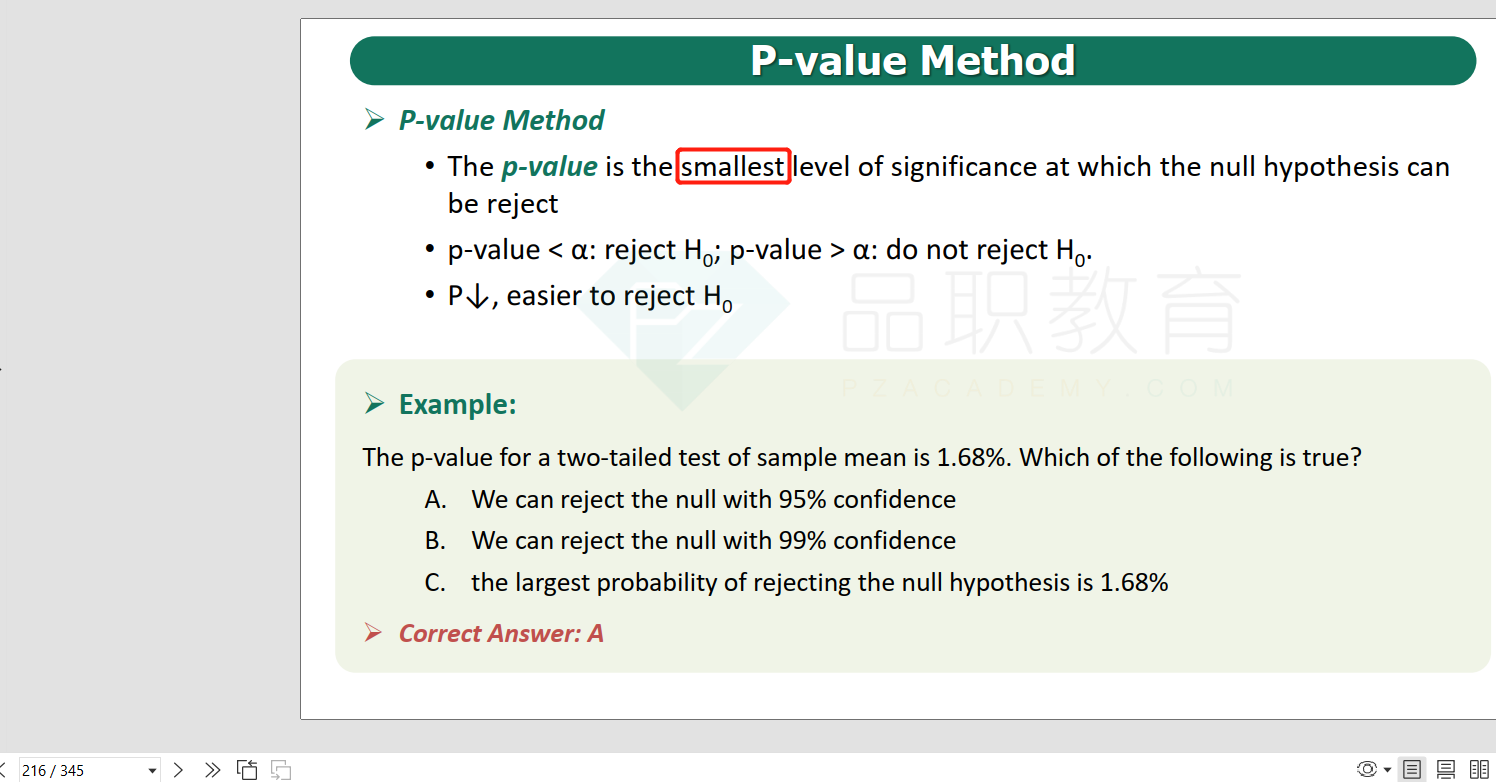NO.PZ2017092702000133
问题如下:
Which of the following statements is correct with respect to the p-value?
选项:
A.It is a less precise measure of test evidence than rejection points.
B.It is the largest level of significance at which the null hypothesis is rejected.
C.It can be compared directly with the level of significance in reaching test conclusions.
解释:
C is correct.
When directly comparing the p-value with the level of significance, it can be used as an alternative to using rejection points to reach conclusions on hypothesis tests. If the p-value is smaller than the specified level of significance, the null hypothesis is rejected. Otherwise, the null hypothesis is not rejected.
对于一个分布而言,每个概率面积在横轴上都有一个对应点,例如significance level α对应的分位点就是临界值critical value(假设正态分布下α=95%,双尾检验,则右尾就会对应critical value=1.96)。
而p-value也是一个概率面积,对应的点就是计算出来的检验统计量的那个点。所以当p-value<α时,就等价于检验统计量>critical value,也就是拒绝原假设。
能方便解释一下B 选项 - 为何是smallest 而不是 largest 吗?
以下为我的理解 -
p-value 是一个概率, i.e. 如果 p-value 为 0.06 - 则我们可以理解为有 6% 的可能性 the null hypothesis 为 true (base on the available samples).
而 level of significance 只是一个 pre-defined threshold of rejecting null hypothesis - i.e. if p-value >= threshold then we conclude there is statistical evidence to support null hypothesis being true, otherwise, we reject null hypothesis.
e.g. when p-value <0.05 & level of significance = 0.05 --> 则我们可以reject null. Regardless p-value = 0.04, 0.03 etc --> 我们都可以reject null, 那么level of significance 岂不是一个upper bound? 而p-value 也可以理解为 一个大值 where we could reject a null?
请问我的理解错在了哪里? 谢谢




